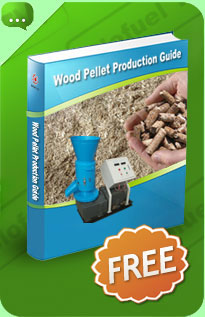Pelletizing Plants
Pelletizing plants could be also described as pellet plant, pellet line, wood pellet line. This term refers to a set of complete pellet equipment work together to produce numerous biomass wood pellets on a bulk at one time.
You should pay attention that apart from pellet mill, other auxiliary equipment are at times still needed within the pelleting method of wood pellet line, including hammer mill, crusher, chipper, hot stove, dryer, cooler, separator, packing machine and so on, but which kind of machines are needed depend on the supplies you might be going to pelletize. You ought to bear in mind that the working principle of a wood pellet mill is to combine quite tiny pieces or powder supplies into a bigger solid form, so if the size of raw material is too huge, they'll want to be decreased in order to make pellet successfully. Take logs for instance, throughout the pelletizing plants, you may firstly use a chipper and then use a hammer mill to preprocess log into really tiny particles. But if the raw material in the wood pellet line is wood chips as an alternative to wood blocks or logs, these chips might be directly loaded into the hammer mill.
From various raw materials to high density solid wood pellets, the entire pelletizing plants need to include the following pelletizing processes: size reduction, material transportation, drying, mixing, conditioning, pellet production, sieving, cooling, pellet transportation, bagging and storing pellets.
Step 1 inside the pelletizing plants-Size Reduction
As we have mentioned before, supplies you're going to make into wood pellets ought to be decreased to a little enough size to fit into the dies. If the raw material is over an inch in size it really is normally chipped 1st, but if the raw material like sawdust, chipping could be skipped. Then you can begin with the hammer mill to continue cutting down their sizes until powder material.
Step 2 within the pelletizing plants-Drying
Just before beginning to create wood pellets, the material need to be dried initial to obtain appropriate moisture content between 10-20%. For in order to let the wood pellet line work smoothly there wants to be some moisture within the material but only inside the proper amounts. Drying the material to correct moisture content is crucial in making quality pellets. Besides, the drier also serves to heat the raw material which makes it a lot more millable. In some circumstances the dryer will heat the material sufficient. In some larger pellet mills the material is going to be heated with dry steam.
Step 3 in the pelletizing plants-Conditioning
Raw material need to have the correct properties just before making into pellets. In most circumstances, supplies contain sufficient natural lignin to bind the pellets together, whilst sometimes they'll require to be added additional binding agents for example vegetable oil to bind pellets.
Step four in the pelletizing plants-Pellet Production
Step 4 Pellet mill will be the crucial piece of equipment in the wood pellet line. Normally you'll find two simple pellet mill kinds. Flat die and ring die. Having a flat die pellet mill the material falls onto the leading of a flat die surface as well as a roller rolls across the material pressing material between the roller and die. A ring die pellet mill has a round ring shaped die. The rollers are inside the ring and press the material against the inside of the die. The pellets are then extruded out of the holes on the outside of the ring.
Step 5 inside the pelletizing plants-Sieving
Not all pellets form correctly. Some will fall apart into little pieces throughout the pelleting method and these pieces will then be sifted by means of a screen. Depending on the top quality and consistency of the pellets you're producing the pellets may be sifted for sized.
Step 6 in the pelletizing plants-Cooling
When the finished pellets leave the mill they'll be hot and occasionally are till release moisture vapor so they have to be cooled and dried. The most common way is to spread them out and let them cool and dry naturally. At times air is circulated by way of them with blowers or fans, or often you can use a cooler as your helper. Care need to be taken to not dry them too rapidly or they could develop tension cracks.
Step 7 in the pelletizing plants-Pellet Transportation
As soon as the pellets are cooled they'll be immediately transported to the bagging facility if it really is a commercial pellet mill. Bucket elevators are frequently utilized at this stage.
Step 8 inside the pelletizing plants -Bagging and Storing
At this point the pellets are finished and ready to be utilized. But if for commercial use, even you just for personal residential purpose to say the least, you'll need to pack them effectively to avoid becoming affected with damp as if the pellets absorb moisture they'll expand and turn into no value at all. Wood pellets are generally put into plastic bags and sealed.

